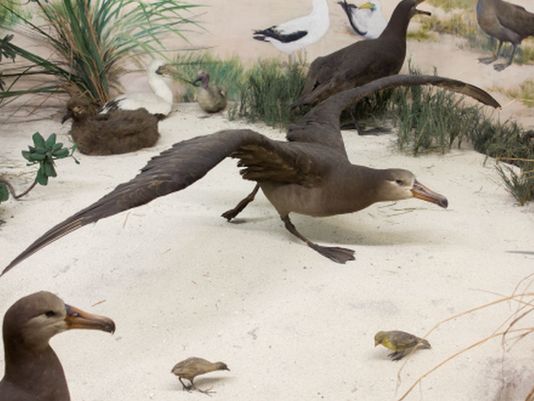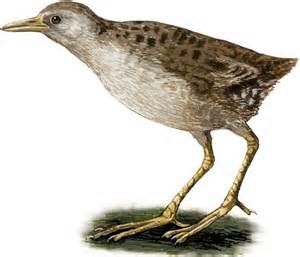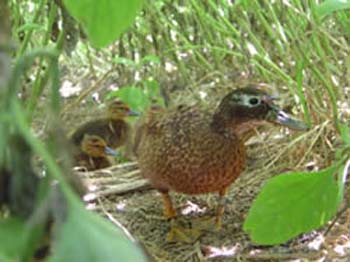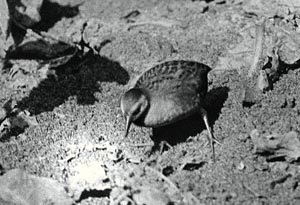
Porzana palmeri
SUBFAMILY
Rallinae
TAXONOMY
Porzanula palmeri Frohawk, 1892, Laysan I.
OTHER COMMON NAMES
French: Marouette de Laysan; German: Laysansumpfhuhn;
Spanish: Polluela de Laysan.
PHYSICAL CHARACTERISTICS
5.9 in (15 cm). Flightless. Light brown, streaked darker on upperparts,
ashy-gray from face to breast; some white flank markings.
Juvenile buff on underparts.
DISTRIBUTION
Recently extinct; occurred on northwestern Hawaiian Islands;
naturally on Laysan Island, introduced to Midway Atoll.
HABITAT
Tussock grass and scrub thickets.
BEHAVIOR
Was active, restless, pugnacious and presumably territorial.
Showed little fear of humans. Called communally after dusk,
with a warbling or rattling song.
FEEDING ECOLOGY AND DIET
Ate principally insects; also spiders, birds’ eggs, carrion, and
some plant material. Approached people for food.
REPRODUCTIVE BIOLOGY
Apparently monogamous. Bred mainly April through July.
Nest a cup or ball of grass in shelter of tussock or other vegetation.
Eggs two to three.
CONSERVATION STATUS
Formerly common on Laysan I.; habitat destruction by introduced
rabbits led to its extinction between 1923 and 1936. Introduced
to two islands on the Midway Atoll in 1891 and 1910,
it thrived but was exterminated by rats that came ashore from a
U.S. Navy landing craft in 1943.
SIGNIFICANCE TO HUMANS
None known.
Photo Gallery of - Laysan rail




 Animalia Life
Animalia Life